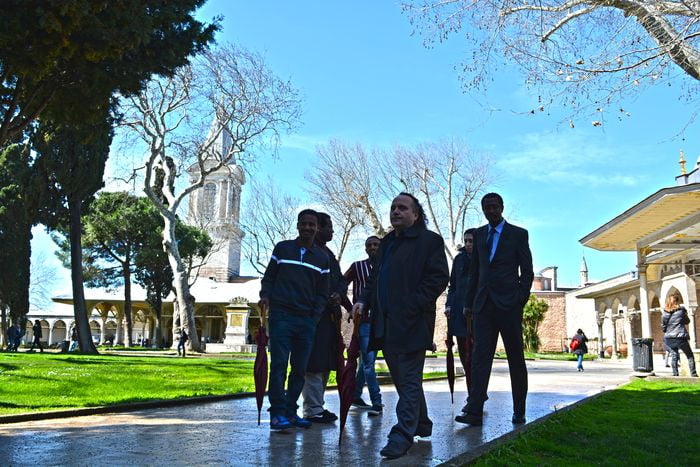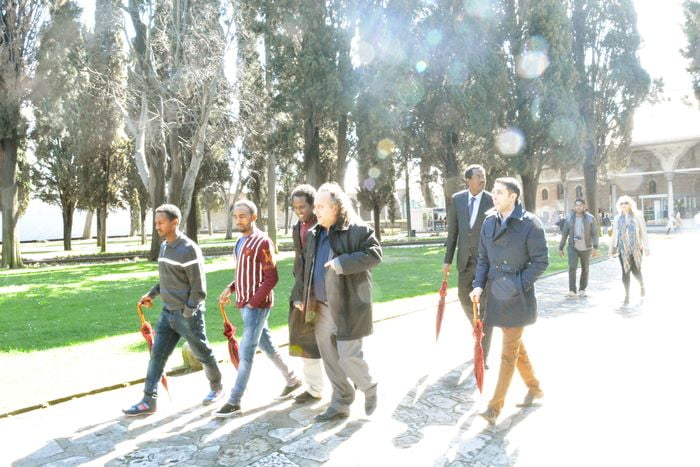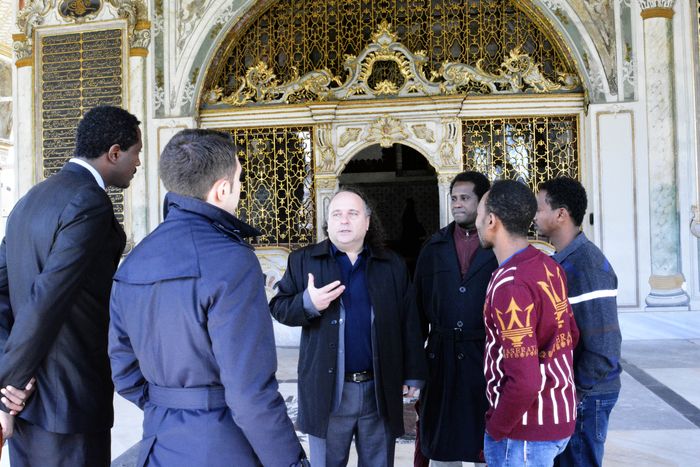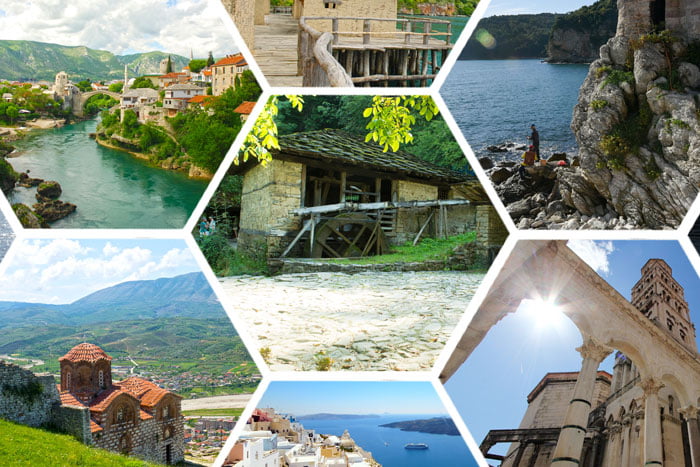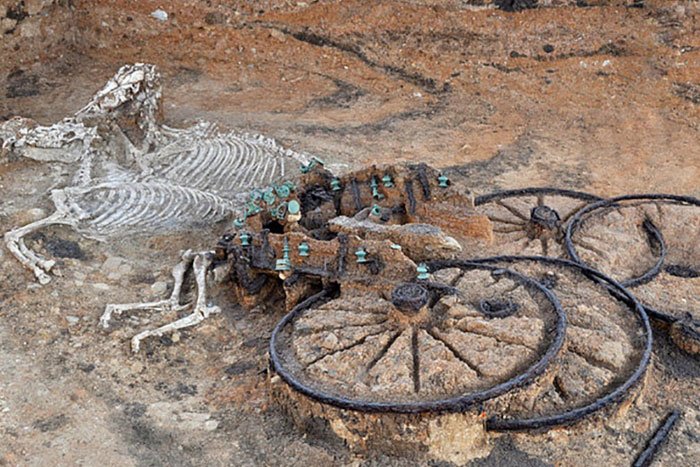(5) If anyone does not confess that the flesh of the Lord is life-giving because it is the flesh of the Word of God, etc.
(6) If anyone does not confess two natures in Christ, etc.
(7) If anyone does not confess that Christ is seated with God the Father in body and soul, and so will come to judge, and that he will remain God forever without any grossness, etc.
(8) If anyone ventures to represent the divine image (karakthr) of the Word after the Incarnation with material colours, let him be anathema!
(9) If anyone ventures to represent in human figures, by means of material colours, by reason of the incarnation, the substance or person (ousia or hypostasis) of the Word, which cannot be depicted, and does not rather confess that even after the Incarnation he [i.e., the Word] cannot be depicted, let him be anathema!
(10) If anyone ventures to represent the hypostatic union of the two natures in a picture, and calls it Christ, and fires falsely represents a union of the two natures, etc.!
(11) If anyone separates the flesh united with the person of the Word from it, and endeavours to represent it separately in a picture, etc.!
(12) If anyone separates the one Christ into two persons, and endeavours to represent Him who was born of the Virgin separately, and thus accepts only a relative (sketikh) union of the natures, etc.
(13) If anyone represents in a picture the flesh deified by its union with the Word, and thus separates it from the Godhead, etc.
Endeavours to separate
(14) If anyone endeavours to represent by material colours, God the Word as a mere man, who, although bearing the form of God, yet has assumed the form of a servant in his own person, and thus endeavours to separate him from his inseparable Godhead, so that he thereby introduces a quaternity into the Holy Trinity, etc.
(15) If anyone shall not confess the holy ever-virgin Mary, truly and properly the Mother of God, to be higher than every creature whether visible or invisible, and does not with sincere faith seek her intercessions as of one having confidence in her access to our God, since she bare him, etc.
(16) If anyone shall endeavour to represent the forms of the Saints in lifeless pictures with material colours which are of no value (for this notion is vain and introduced by the devil), and does not rather represent their virtues as living images in himself, etc.
(17) If anyone denies the profit of the invocation of Saints, etc.
Read More about Apologia of St John Damascene Against those who Decry Holy Images Part 7
